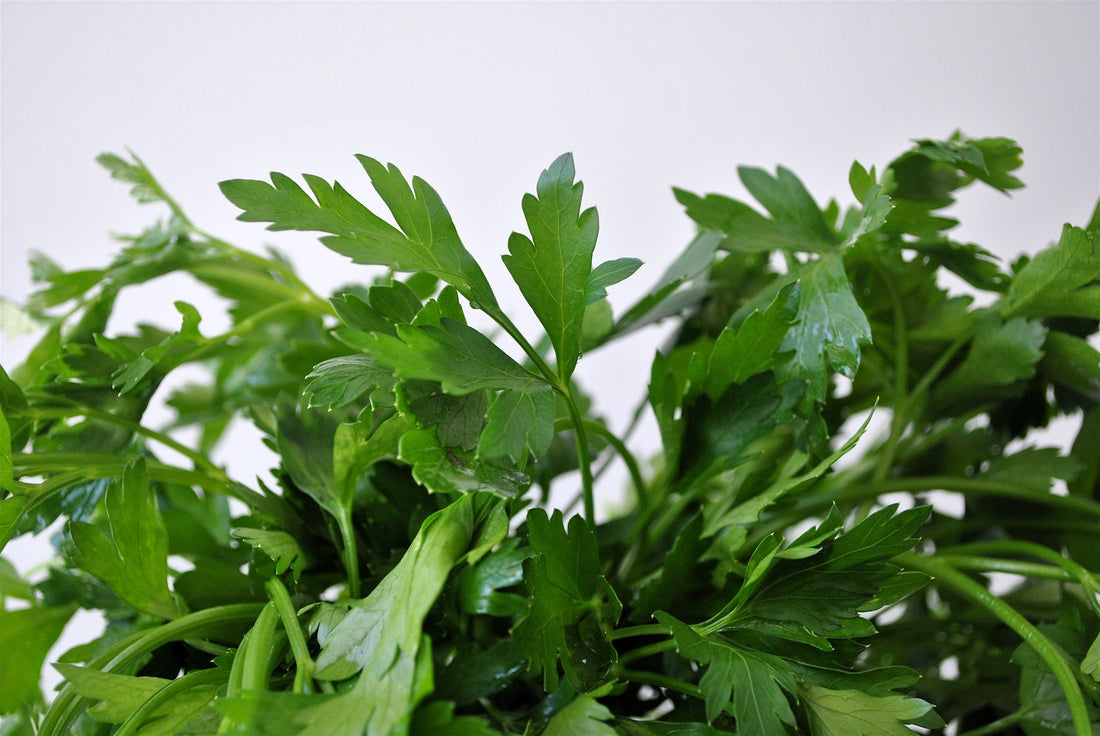
How to Grow Parsley from Seed
Parsley (Petroselinum crispum) is a versatile and nutritious herb, widely used in British cooking. Its ability to enhance both the flavour and appearance of dishes makes it a kitchen staple. Whether you prefer the curly-leaf or flat-leaf variety, parsley is straightforward to grow in the UK. This guide will provide a step-by-step breakdown to ensure you grow a healthy and productive parsley crop.
Introduction to Growing Parsley from Seed
Parsley is a biennial herb, meaning it completes its life cycle over two years. In its first year, it produces lush, edible foliage, while in its second year, it flowers and sets seed. It is typically grown as an annual in the UK to maximise leaf production. Parsley thrives in the UK’s mild and temperate climate, making it a reliable choice for herb gardens, containers, or even window boxes.
Choosing the Right Variety
There are two main types of parsley commonly grown in the UK:
- Curly-Leaf Parsley (Petroselinum crispum): Known for its decorative ruffled leaves, this variety is commonly used as a garnish but is equally good for cooking.
- Flat-Leaf Parsley (Petroselinum crispum var. neapolitanum): Often referred to as "Italian parsley," this variety has a stronger flavour and is preferred for culinary use.
Both varieties are similar in cultivation requirements, so choose based on your culinary needs or aesthetic preference.
Preparing the Growing Area
Parsley requires well-drained, fertile soil and a location that receives full sun or partial shade.
-
Soil Preparation:
- Loosen the soil to a depth of 20-30 cm and mix in plenty of well-rotted compost or manure to improve fertility.
- Parsley grows best in soil with a pH of 6.0-7.0. If your soil is too acidic, add lime to balance it.
-
Container Growing:
- Use a deep pot (at least 20 cm) to accommodate parsley’s long taproot.
- Fill with high-quality compost mixed with a handful of slow-release fertiliser.
Sowing and Planting Parsley
Parsley is notoriously slow to germinate, sometimes taking up to four weeks. Patience and proper preparation are key.
Sowing Indoors
- Timing: Start seeds indoors in February or March.
-
Process:
- Soak seeds in warm water overnight to improve germination rates.
- Fill seed trays or pots with moist compost and sow seeds thinly, about 1 cm deep.
- Cover with a thin layer of compost, water lightly, and place in a warm location (18-22°C).
- Transplanting: Once seedlings have 2-3 sets of true leaves and are large enough to handle, harden them off before planting outdoors.
Direct Sowing Outdoors
- Timing: Sow seeds directly into prepared soil from April to June.
-
Process:
- Create shallow drills about 1 cm deep and space them 15 cm apart.
- Sow seeds thinly, cover lightly with soil, and water gently.
Spacing and Planting Out
- Spacing: Thin seedlings or plant out at 20-30 cm intervals to allow each plant enough space to grow.
- Companion Planting: Parsley grows well with tomatoes, carrots, and onions. Avoid planting near mint, which can compete aggressively for nutrients.
Caring for Parsley
Once established, parsley is relatively low-maintenance but benefits from consistent care.
-
Watering:
- Keep the soil consistently moist but not waterlogged. Parsley does not tolerate drought.
- Water deeply during dry spells, especially for plants grown in pots.
-
Feeding:
- Apply a liquid fertiliser every 4-6 weeks to support healthy growth.
- Avoid overfeeding, which can lead to excessive leaf growth at the expense of flavour.
-
Weeding: Regularly remove weeds to reduce competition for nutrients and water.
-
Mulching: Apply a thin layer of organic mulch to retain moisture and suppress weeds.
Harvesting Parsley
Parsley can be harvested once the plant has established a good number of leaves, typically 10-12 weeks after sowing.
-
How to Harvest:
- Use scissors to cut stems at the base, rather than pulling leaves, to avoid damaging the plant.
- Always harvest from the outside of the plant, leaving the central leaves to continue growing.
-
Frequency:
- Regular harvesting encourages the plant to produce more foliage.
- Avoid harvesting more than one-third of the plant at a time to ensure it remains productive.
Pests and Diseases
Parsley is relatively pest-resistant but can occasionally face issues:
- Aphids: These can be controlled by spraying plants with a strong jet of water or using organic insecticidal soap.
- Carrot Root Fly: Parsley is a relative of carrots and can attract this pest. Use fine mesh netting to protect plants.
- Powdery Mildew: Prevent this fungal issue by ensuring good air circulation and avoiding overhead watering.
Overwintering Parsley
Parsley is a biennial and can survive mild UK winters with some protection.
-
In the Ground:
- Mulch heavily around the base of the plant in late autumn to protect the roots from frost.
- Cover with horticultural fleece during extreme cold.
-
In Pots:
- Move containers to a sheltered spot, such as a cold frame or unheated greenhouse.
Propagating Parsley
For a continuous supply of parsley, sow seeds every 4-6 weeks throughout spring and summer. This succession planting ensures you have fresh leaves well into autumn.
Frequently Asked Questions
Q: Can parsley be grown indoors?
A: Yes, parsley grows well on sunny windowsills. Ensure pots have good drainage and water regularly.
Q: How long does parsley take to germinate?
A: Parsley seeds can take 2-4 weeks to germinate. Soaking seeds overnight can speed up the process.
Q: Why is my parsley turning yellow?
A: Yellow leaves are often a sign of overwatering, nutrient deficiency, or pest infestation. Adjust care accordingly.
Q: How long will parsley last?
A: As a biennial, parsley produces leaves in its first year and flowers in its second. Most gardeners treat it as an annual, replanting yearly for the best leaf production.
Summary and Final Tips
Parsley is a rewarding herb to grow , requiring just a little patience during germination. To summarise:
- Choose a sunny or partially shaded spot with fertile, well-drained soil.
- Sow seeds indoors or directly outdoors from spring to early summer.
- Harvest leaves regularly and protect plants from frost for overwintering.
With proper care, parsley will reward you with a continuous supply of fresh, fragrant leaves to elevate your cooking all year round. Happy gardening!
